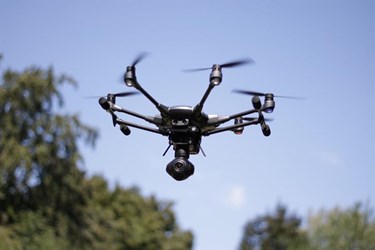- Ameya360 Component Supply Platform >
- Trade news >
- Robot Changes Skins to Change Its Moves
Robot Changes Skins to Change Its Moves
MIT has invented a robot that swaps out water-soluble, recyclable exoskeletons to perform different tasks by walking, rolling on wheels, gliding, or floating. Daniela Rus, director of MIT’s Computer Science and Artificial Intelligence Laboratory (CSAIL), led the engineering team that developed the robot, dubbed Primer.
Although robots that can change their form or function have been created at larger sizes, building smaller-scale self-reconfiguring robots is difficult, partly because of the size and weight of onboard electronics. The cube-shaped Primer robot is controlled remotely via magnets. Its exoskeletons, or skins, are heat-activated, rectangular plastic sheets that self-fold into different shapes to customize the robot for various tasks. Immersion in water dissolves the exoskeleton after Primer completes the job.
Primer’s technology derives from previous projects by Rus’ team, including centimeter-long, “origami” microrobots that can be precisely customized from sheets of plastic, as well as magnetic blocks that assemble themselves into different shapes. Other CSAIL self-assembling robotics projects have included tiny robotic pebbles that self-assemble to duplicate an object when it’s placed inside a pile of them.
The idea behind Primer and other self-reconfiguring robots is to give a single machine the ability to perform multiple functions, instead of requiring a separate robot for each task. The team plans to add more modes, such as burrowing in sand, driving through water, and camouflaging the robot’s color. “I can imagine one day being able to customize robots with different arms and appendages,” said Rus in a statement. “Why update a whole robot when you can just update one part of it?”
Modular, self-reconfiguring robots, and even self-assembling/reassembling robots, have been developed at other university labs, including the University of Pennsylvania’s Modular Robotics Laboratory, the University of Southern California’s Robotics and Autonomous Systems Center, the Georgia Institute of Technology’s Georgia Robotics and Intelligent Systems (GRITS) Laboratory, and Carnegie Mellon University’s Robotics Institute.
Online messageinquiry

New standards provide public assurance on safety, security and etiquette for use of drones
- Week of hot material
- Material in short supply seckilling
| model | brand | Quote |
|---|---|---|
| RB751G-40T2R | ROHM Semiconductor | |
| MC33074DR2G | onsemi | |
| BD71847AMWV-E2 | ROHM Semiconductor | |
| CDZVT2R20B | ROHM Semiconductor | |
| TL431ACLPR | Texas Instruments |
| model | brand | To snap up |
|---|---|---|
| TPS63050YFFR | Texas Instruments | |
| IPZ40N04S5L4R8ATMA1 | Infineon Technologies | |
| STM32F429IGT6 | STMicroelectronics | |
| BU33JA2MNVX-CTL | ROHM Semiconductor | |
| BP3621 | ROHM Semiconductor | |
| ESR03EZPJ151 | ROHM Semiconductor |
- Week of ranking
- Month ranking
Qr code of ameya360 official account
Identify TWO-DIMENSIONAL code, you can pay attention to


Please enter the verification code in the image below:






















